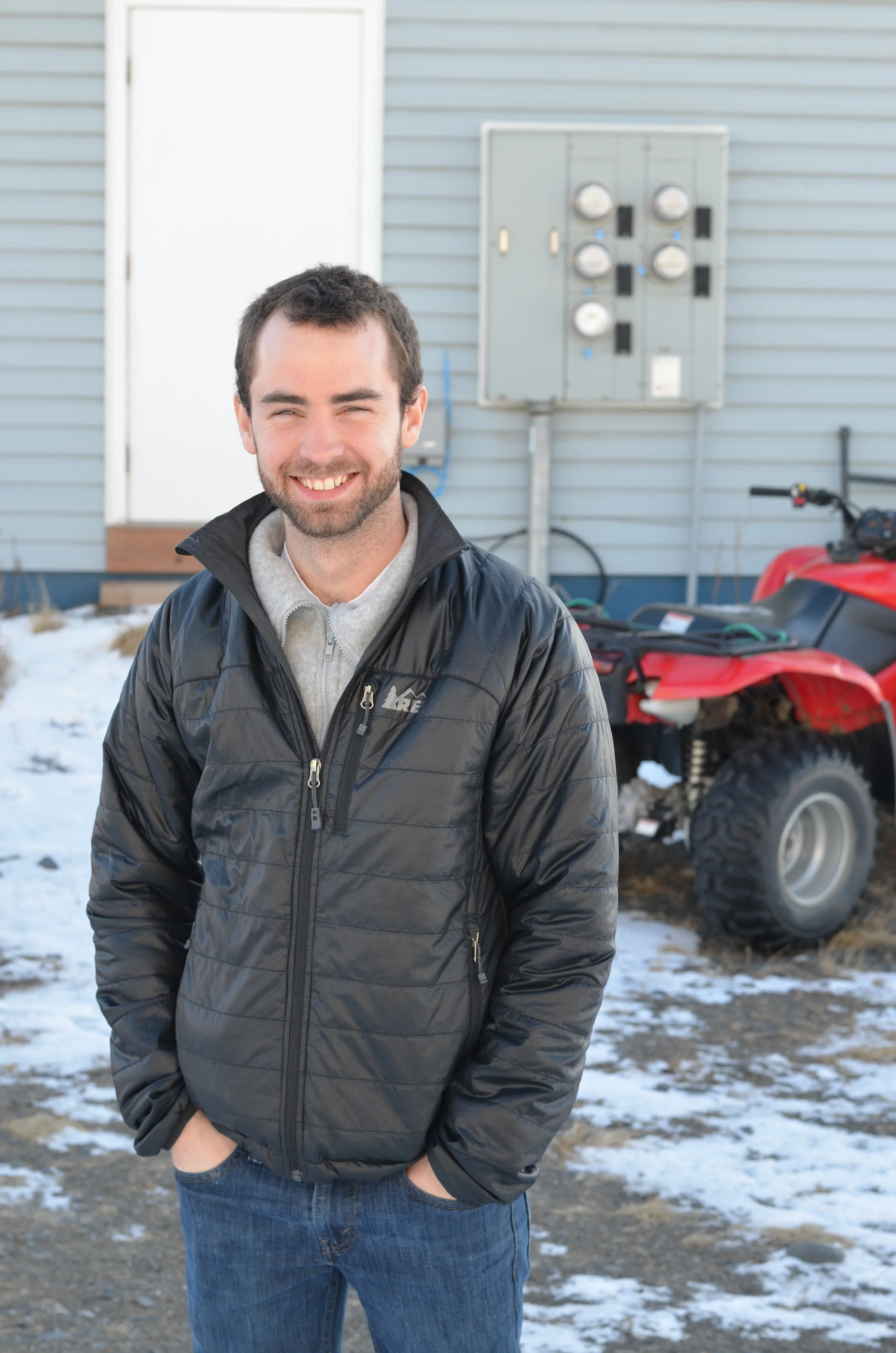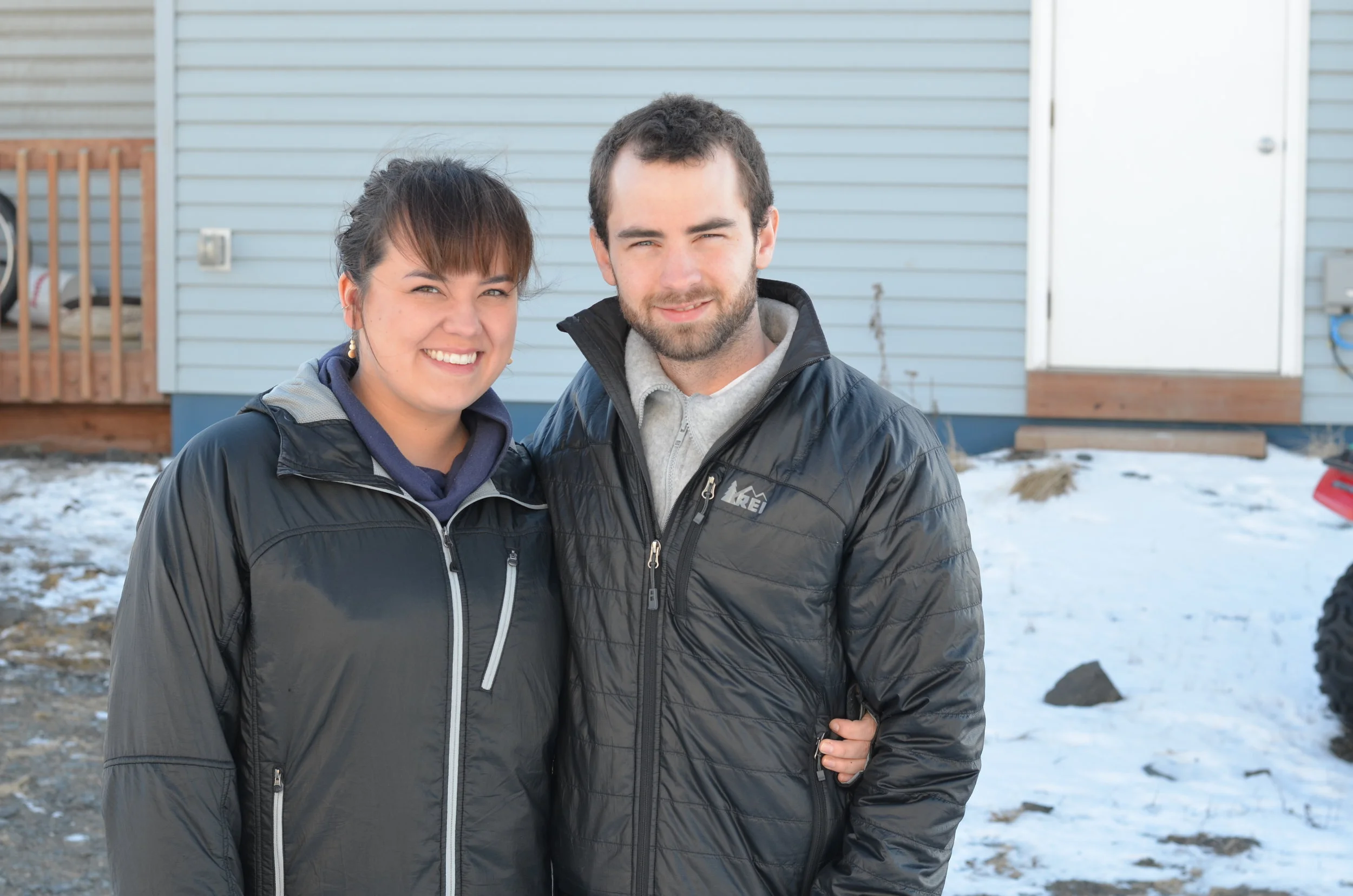Thomas Simonsson
Unalakleet
Simonsson standing out Unalakleet School's teacher housing.
the blink of an eye
I got married when I was 19. We were expecting our first child in 2011, in August, and me and my wife at the time, Madelene, went through the pregnancy. Nine months, and there was one week left. And [Madelene's] heart stopped beating. And the baby girl passed away as well. I kind of hit a brick wall, because everything I was working very hard for shattered... in the blink of an eye. I quit my job. I asked God what to do. And God told me after some time that I should go to North Park University in Chicago. ... North Park University and the Covenant Church have very strong Swedish roots. ... I had visited Chicago about six years earlier with a gospel group that I was playing piano for, and God told me, very clearly told me, that I needed to go back over there. So I sold everything I had, and at the one year mark of when Madelene passed away, I started school at North Park University. I got my visa and I moved over. I was in the second semester [when] I met Katiya, [who's from here in Unalakleet]. And [we] started to date.
i ended up in alaska
I never developed this homesickness or this need to be in one place. I lived in this village, Tranemo, [Sweden]. It’s a little coastal city. It was a difficult place to live in as a Christian, because it was a small village of about 5,000 people and there were no Christians. I had maybe three or four people when I went to the youth group, and they were all way older than me. I had friends, but it was a struggle, because everyone knew that I was the pastor’s kid. They could always tease me about the church, so I don’t necessarily have good memories from that place. I wouldn’t say that my roots are from there. I kind of got pulled up at important times, so I don’t really feel like my roots are anywhere. They are on the surface. I know it’s cliche, but: Home is where your heart is. ...Or at least: home is where I sleep. My siblings all live back home in Sweden, close to where my mom and dad live. They have families and kids, and [they’re] all doing well, but no one really went out like I did. There’s some reasons for that, but that’s another long story... But I ended up in Alaska.
"The first missionary who came up here was a Swede. His name was Axel Karlsson. ... He came out in a ship, and he asked the captain, 'Who are these people, living on the shorelines up in Alaska?' And the captain said, 'Don’t bother, they are soulless creatures.' So Axel Karlson was like, 'Good!' ... So he went ashore in Unalakleet, and he established a mission station."
a B-3 Organ on the south side
When I moved to Chicago, I connected with some very good friends of mine that I met when their choir came and visited Sweden. I kind of got adopted by this African American family. Lyndel, the father of this family, took me out to the South Side, [where] their church was, and I found this B-3 organ, this atypical gospel instrument, on sale. He took me out there and helped me pick it up. And as we were waiting for the pastor to come and unlock [the] church where the organ was, this African American guy came up and was like, “We don’t like your kind here.” I [asked], “What do you mean?” “We don’t like white people here. Like I could beat you down right here. You guys brainwashed us.” I had to step back, and Lyndel went in between and started to talk to this guy. I never realized that kind of atmosphere between white people and African American people [was] actually a thing, you know? Racism is real, and injustice between people of color and people of no color is real. I was very naive when I moved here, you know, because Sweden is very white. ... I never thought that people could be like that towards each other.
When I First Came to Alaska...
I’ve been having to think a lot about how I do things and how I approach things [here in Unalakleet]. Some people always think of me as an outsider to the village, and I guess I have to be really sensitive-- way more sensitive than what I thought. It’s not just a culture; it’s not like me going from Sweden to Germany, or Sweden to Spain, or Sweden to Chicago. Those [are] white cultures, quick cultures, and Westernized cultures. I skyped with my Mom after [Katiya and I] started to date, and I told her Katiya is a Native Alaskan [and] they have their own language. My mom was like, “How do you communicate, does she speak English?” And I’m like, “Yes mom, they do speak English.” And I made assumptions [too], and people do that about me too, I guess. ... I thought it was a culture collision when I moved to Chicago, and then I realized that I’m almost over my head up here [in rural Alaska]. Being white up here is actually a sensitive thing. I’m a minority, but the history is so fresh.
reversing the project through Four-Part Harmonies
My degree is in music and musical worship. When I came [to Unalakleet], I found that they sing these Inupiaq songs in church, but they don’t have any music for it-- it’s just orally passed down. So I looked into the possibility of writing down the music for the songs into four-part harmonies, as they sing it. I got encouraged by the church board and some people here, and got a grant to buy equipment and cover the time that I will spend on this project. I’m writing down in four-part harmony exactly how they sing the songs, so there can be a print, and anyone that is so musically inclined can look at the music and actually sing it as it was sung. Many of the people that know these songs and melodies and how to sing it are getting old, and they are dying. Soon enough, there will be no one around, if it’s not picked up by other people. It might be naive, but I feel as a white Swedish person that moved up here to this culture, I am, you know, reversing the project. I’m giving something back, in order for the community to preserve their language and history, and in a way, even though it is songs that are translated from English songs and Christian songs, it is still a way to preserve a language and a part of history.
Simonsson with his wife Katiya in Unalakleet.

